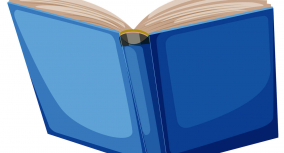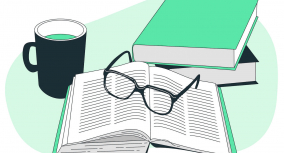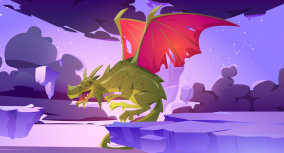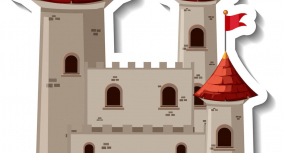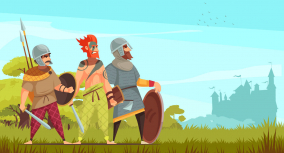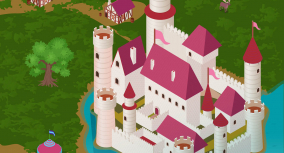Being the first known text written in Old English, Beowulf is filled with literary devices and unusual vocabulary that may sound “strange” to the contemporary ear. While reading the original text can be challenging, the epic highly valuable for both readers and scholars. The use of figurative language and metaphors in Beowulf makes it an exciting subject for literary analysis, while its themes offer a glimpse into the mysterious world of early medieval society.
In this article by Custom-Writing.org experts, you’ll find an in-depth analysis of Beowulf’s literary devices. We’ll examine key symbols such as Heorot and Beowulf’s sword, break down examples of figurative language (including personification and alliteration), and explore the poem’s genre in detail. We’ll also discuss Beowulf’s setting and its significance.
📜 Is Beowulf an Epic?
Beowulf is an epic poem because the protagonist is a hero who travels to prove his strength in battles against demons and beasts. The narration starts “in the middle of things,” which is typical for ancient epics. It is not a lyric poem, although some scholars classify it as an elegy.
🦄 Beowulf Symbols
The most important symbols in Beowulf are Heorot (Horthgar’s hall) and Beowulf’s sword.
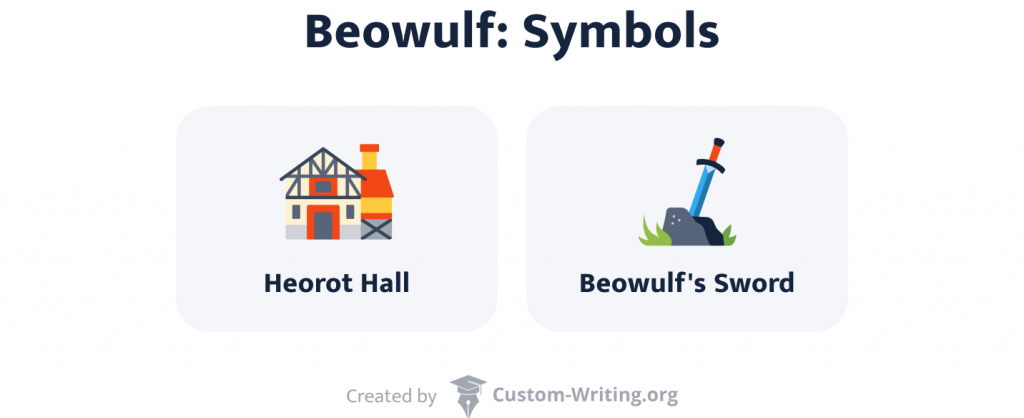
Heorot (Hrothgar’s Hall)
In Beowulf, Heorot is the seat of the Danish government and the residence of the king’s warriors. Hrothgar built it as the largest mead-hall ever known. It serves as a symbol of human culture and civilization, as well as the king’s power. In short, it represents everything positive in Beowulf.
In due time it happened
Beowulf, Narrator, Part II, Lines 23-26
Early ’mong men, that ’twas finished entirely,
The greatest of hall-buildings; Heorot he named it
Who wide-reaching word-sway wielded ’mong earlmen.
Hrothgar’s hall is bright and warm. People use it to celebrate happy events, sing songs, and share food. Here the scop sings his songs about the past kings and heroes. This activity preserves the values and history of society. Meanwhile, the mead-hall contrasts with the darkness of Grendel’s swamps. This juxtaposition underlines how critical it is to unite.
Beowulf’s Sword
Throughout the poem, Beowulf uses 4 swords:
- The first is his own sword. It defeats the sea monsters, showing the superhuman strength of the hero.
- The second is Hrunting, which failed to pierce Grendel’s mother. Unferth lent it to Beowulf before the battle. The sword represents Unferth’s unwillingness to fight for his people, as he could have used it himself. Even provided that the gift was sincere, the blade is associated with moral weakness. That is why it was useless in battle.
- Beowulf found the third sword in Grendel’s mother’s hoard. The weapon was made by giants (who were Cain’s descendants like Grendel and his mother). This relation means that evil can be defeated only with evil. Besides, the giant sword melted to the hilt when Beowulf decapitated Grendel’s corpse. Thus, the monster is dead, so no weapon is needed anymore.
- Nægling is supposedly the sword of Hrethel given to Beowulf by Hygelac. The hero uses this fourth sword against the dragon in his last battle. Beowulf is too strong, so the weapon falls into two parts. The sword symbolizes that real power does not require any additional objects.
🏰 Beowulf Setting
What Is the Setting of Beowulf?
The epic poem takes place in Scandinavia, in the territory of modern Denmark and Sweden. Geatland was where Beowulf came from. The Geats lived in the south of today’s Sweden. Hrothgar and his mead-hall Heorot were located on the Danish island, Sjaelland. However, the descriptions of the landscape in the poem are fictional. Most likely, the poet never visited Scandinavia.
When Does Beowulf Take Place?
Based on the descriptions from the text, scholars have found that some of the characters of the poem lived in the 6th century. The tribal groups of Scyldings and Geats really existed around 500 AD. So, Hrothgar, Wiglaf, and Hygelac could have been historical figures. Besides, the feud of Geats and Swedes was a real fact.
Anglo-Saxon Culture in Beowulf
The Anglo-Saxons were Germanic tribes that migrated to Great Britain from the continent. They lived on the island between 450 and 1066 AD. Anglo-Saxon society was divided into working men, churchmen, and warriors. They were pagans and believed in lucky charms that protected them from evil spirits and illnesses.
Loyalty, bravery, duty, and honor were the critical Anglo-Saxon values in Beowulf. Warriors were the most respected people. They lived according to the code of conduct, and cowardice meant “a life of disgrace,” as the poem claims.
Death is more pleasant
Beowulf, Wiglaf, Part XXXIX, Lines 66-67
To every earlman than infamous life is!
The main characters of Beowulf were role models for the Anglo-Saxons. The protagonist was “The mildest of men and the gentlest, kindest to his people, and most eager for fame.” In combination with strength and bravery, it made him a perfect hero.
The custom of wergild in Beowulf is an important tradition. People could pay for injuries or death they caused to be rehabilitated. For instance, Grendel refused to pay wergild to Hrothgar.
In conclusion, Beowulf is an instructive poem that showed people the difference between good vs. evil. It answered the moral questions of gratitude, hospitality, courage, and selflessness.
🦋 Figurative Language in Beowulf
Figurative language makes it so that words or phrases are not translated literally and have a non-obvious meaning. It’s frequently used to elicit an emotional response.
You’ll see many examples of figurative language in Beowulf if you know what to look for. Below, we’ll explore personification, alliteration, onomatopoeia, similes, and hyperboles in the poem.
Personification in Beowulf
Beowulf has multiple personifications that endow an animal or object with human characteristics. For instance, “vengeful creatures, seated to banquet at the bottom of sea” means sea monsters. Another example of personification is “the frost bit my fingers,” meaning that the cold was so extreme that fingers started to hurt.
Alliteration in Beowulf
Alliteration requires repeating the first consonants in successive words. It is a traditional device in oral storytelling. The ear-pleasing effect makes it easier to perceive and memorize information. For example, “He bound to the bank then the broad-bosomed vessel.” In this example, you can see how “b” is repeated multiple times, which creates alliteration when you read this sentence. “Up from his swampland, sliding silently” is also an alliteration with the sound “s.”
Onomatopoeia in Beowulf
Words that are pronounced similarly to the sounds they describe are called onomatopoeia. There are examples of such words in Beowulf.
For instance, “The dragon roared with anger.” If you read this sentence aloud, you’ll hear the sound “r,” which resembles the dragon’s roar. Onomatopoeia “the sword rings and sings” resembles the sound of a cling when the blade hits the surface.
Simile in Beowulf
A simile is used to compare objects, people, or phenomena using the words “like” or “as.” Here’s an example from Beowulf: “His anger clouded the hearts of men like smoke.” In this example, you can see how “b” is repeated multiple times, which creates alliteration when you read this sentence. Another instance of simile is “She flew like a bird,” when describing a ship sailing.
Hyperbole in Beowulf
Beowulf has multiple hyperboles that exaggerate certain things to pique the reader’s emotions. For example, Beowulf is “the mightiest man on Earth,” which is surely an overstatement. Another one is “the eagle stuffed his craw with corpses,” as the bird wouldn’t be able to fit an entire corpse in its mouth.
📝 Literary Devices in Beowulf
If you’re going to write a research paper on Beowulf, you’ll definitely stumble upon literary devices. It’s essential to be able to locate them throughout the poem and know what they’re for.
Literary devices are techniques that enable a writer to express ideas more effectively. Plot, characters, and literary devices all work together to elevate a story and encourage introspection.
If you need help finding and explaining in Beowulf literary devices, check out this next segment.
Metaphors in Beowulf
A metaphor is a description of one thing as if it was something different. For this comparison, an author does not use the words “like” or “as.” Otherwise, it would be a simile.
- “He crept inside a narrow crack in the rock…Teeth tore at him as he wriggled along.” In this passage, the metaphor is created by comparing the rocky cave walls to teeth.
- “Twelve winters of grief for Hrothgar, king of the Danes, sorrow heaped at his door by hell-forged hands.” Here the narrator speaks about Grendel, comparing his hands to metal objects forged in hell.
- The line “That shepherd of evil, guardian of crime” compares Grendel to a shepherd or a guardian of malicious actions. By the way, the words “evil” and “crime” are used as personification because only living creatures require a shepherd or a guardian.
Imagery
The imagery appears when an author uses words that address the reader’s senses. Below you can find examples of imagery in Beowulf.
- “The only sound was the roaring sea, the freezing waves.” “Fastened those claws in his fists till they cracked.” These lines appeal to the sense of hearing. The sounds transmit the reader inside the text, creating real-time experiences.
- “Sorrow heaped at his door.” The word “heaped” creates a visual picture of sorrow. Metaphors often represent visual imagery, like in this case.
Foreshadowing
Almost all events in Beowulf are foreshadowed. Many of them are predicted right before they happen. For the first readers (or listeners) of the poem, foreshadowing did not equal “a spoiler,” as we know it now. Medieval people were familiar with the described events and characters. That is why foreshadowing emphasizes the inevitability of fate, which is one of the poem’s central themes.
For example, the lines “He was sad at heart, unsettled yet ready, sensing his death” foreshadow Beowulf’s death. He knows that he is too old, but still, he wants to try and win. The reader is warned that this might be the last battle, and the protagonist might die.
Kennings in Beowulf
A kenning is a literary device traditional for Anglo-Saxon and Norse poetry. The definition of this stylistic device is a group of two words describing an object instead of a single-word noun. It is a “compressed metaphor.” For example, “whale-road” in Beowulf represents the sea. Kennings make the reader a part of the story, creating a visual experience.
The poem is full of kennings: “horse of the sea,” “sea monster’s home,” “ocean stallion,” “wave skimmer,” “sword’s dew,” “Midnight Stalker,” “Bone Crusher,” “sky-plague,” to name a few. Approximately one-third of Beowulf consists of kennings. The protagonist is rarely called by name. Instead, the narrator names him “The Geatish hero,” “Chief of the Strangers,” “the Lord of the Seamen,” and “the Son of Ecgtheow.” These phrases help us to visualize the character and make him memorable.
Biblical Allusions in Beowulf
An allusion is a reference to events, people, or things that are well-known to the reader. A medieval reader of Beowulf would find many more allusions in the text than we can. Most of the described events, including the kings’ deaths of scop’s stories, were familiar to the first readers.
But some allusions are identifiable for us as well. The poem recalls or hints at several Biblical stories, including the death of Christ, Cain and Abel, the ten commandments, and the Great Flood.
Some pagan traditions also allude to the Bible. In the Book of Exodus, God tells people through Moses not to have other gods before him. This passage represents the author’s disapproval of Paganism: “Sometimes they sacrificed to the old stone gods… hoping for Hell’s support, the Devil’s guidance.”
What do Opening Lines of Beowulf Mean?
In Beowulf, the opening lines tell us a legendary tale of the first great Danish king, Shield Sheafson. His heroic deeds set the mood or the entire poem. Sheafson was an orphan found in the sea but grew to become the terror of all the other tribes. Then the author describes his pompous funeral. The king was put in a ship full of treasures and set out to the sea.
The narrator draws a genealogical tree from Shield Sheafson to Hrothgar, who eventually becomes the King of the Danes. Thus, the text starts by explaining the Hrothgar’s noble and heroic ancestry. This lineage justifies Beowulf’s loyalty and desire to assist a great king in defeating the evil.
The opening lines introduce the heroic code as the central theme of the poem.
Thank you for reading this article! If you need help with formulating a thesis for your paper on Beowulf, try our thesis statement generator. If you are looking for an essay idea on the play, you might want to take a look at the essay topics collection. Any questions left? Check the QA section!
🔗 References
- Symbolism in Beowulf | Symbols, Importance & Examples
- Where is Beowulf set? What’s the significance of that setting?
- The History Behind Beowulf
- Beowulf – World History Encyclopedia
- Beowulf – The Three Evil and Powerful Monsters | Great Works
- Beowulf | Figurative Language, Analysis & Examples
- Grendel as a Personification of Evil in “Beowulf” Poem
- “Beowulf”: Cultural Elements of the Anglo-Saxon Piece of Literature
- Beowulf, The National Epic of the Anglo-Saxons




